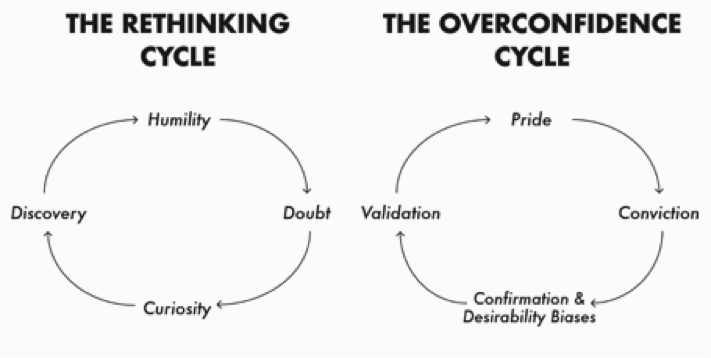Over the last year – when Covid hit us all in March 2020, I noticed an increase in client requests for the EQ 2.0 (Emotional Quotient) assessment and the EQ 2.0 360, whereby individuals self-assess and receive feedback on the categories from their manager, peers, direct reports and others.
Although this has primarily been requested by leadership, I believe many of us have struggled with balancing our emotional intelligence this past year.
Defining Emotional Intelligence
Put simply, Emotional Intelligence is defined as how we:
- Perceive and express ourselves
- Develop and maintain relationships
- Manage our relationships
- Cope with challenges (i.e., stress)
- Use emotional information effectively in a healthy way
Emotional Intelligence helps us to be more aware and understand what is happening internally emotionally. We can then express this in our interactions with others thoughtfully. Emotional Intelligence helps us to monitor our emotions, evaluate them and use this information to guide our thinking and ultimately the actions we take.
What I love about EQ / EI * is that the research shows that we can increase areas of emotional intelligence that emerge as lower scores on the assessment.
In addition, feedback in our assessment – be it self-assessment or a 360 – is purely a snapshot in time – like a balance sheet. It reflects what may be happening for us during that time, personally and/or professionally.
With this insight into where we may be out of balance, we can then choose what we want to focus on to create that balance within ourselves. This means we can effectively regulate and manage our emotions to think and act.
Gifts of Emotions
Emotions offer us a distinctive readiness to act and help shape our decisions. They can often over-ride reason which, if we do not pay attention to what’s happening inside us emotionally, can result in poor decision-making that can ultimately lead to negative consequences.
Emotions |
Cue to Us that We Require |
| Anger | Direction, motivation or boundary setting |
| Anxiety | Clarity |
| Fear | Protection against harm |
| Joy | Emotional vitality |
| Love | Warmth, caring for others |
| Sadness | Sensitivity to others’ loss and our own |
| Shame | Humility |
Case Examples:
Case 1: Lower Empathy and Higher Optimism
I ran EQ 2.0 Self-Assessments with a senior leadership team. Results indicated that the entire team were lower in empathy and higher in optimism.
Empathy is our ability to read others and the situation, to be able to pick up on what others may be feeling (i.e., reading between the lines). It is respecting and being in touch with others’ emotions and caring about how another may be feeling.
When we have higher empathy, it helps us to manage our relationships throughout an organization far more effectively.
Optimism is our ability to be positive even when things are difficult. We are hopeful about the future and see the best in others. Overall, we bring a positive outlook.
One would think having high optimism, especially from leadership, would be a ‘good thing.’ And – it is!
Remember, this is about balancing our emotional intelligence areas.
How did this combo play out?
When an employee was stressed or having difficulty viewing their concerns positively, rather than empathize with their experience and how they were feeling, the senior leaders would respond by either dismissing the anxiety/concerns or reframing their employee’s concerns to a more positive frame (trying to suppress the anxiety albeit unintentionally).
I want to be clear that the intention was to support their employees. The optimism they bring is a valuable and important strength in leadership. This is about ensuring there is balance in how they are behaving as leaders –with lower empathy, they were not able to step into the world of their employees and connect to what their employees were feeling about the situation; this meant the leader was missing the cue to connect first to the employees’ emotion before offering a more optimistic frame or alternative.
Empathy does not require that we have the same exact experience as the person sharing their story with us…empathy is
connecting with the emotion that someone is experiencing, not the event or the circumstance.
Brené Brown
Case 2: Higher Self-Regard (Self-Perception) and Lower Reality Testing (Decision-Making)
After conducting an EQ Self-Assessment with a leader I was coaching, we discovered in this individual’s results that they were quite high in self-regard and lower in their reality testing.
Self-Regard is our ability to feel good about ourselves, despite our awareness of both the good and not so good aspects of ourselves. It is often a sign of high confidence and respect for oneself and manifests as thinking highly of themselves.
Reality Testing is our ability to see situations as they are. Particularly as part of our decision making, it is important for us to be able to make realistic decisions based on recognizing what is occurring and being aware of our own biases. When we can be aware and manage our emotions effectively, we are better able to be objective and practice good decision-making that is not clouded by our biases.
How did this combo play out?
Due to their high self-regard, my client would at times unintentionally dismiss or not seek input from other valuable team members. This individual’s lower score in reality testing, although their confidence was high, meant they were missing data/accuracy in what was actually occurring at times and, rather than bringing objectivity and being aware of their own biases, the individual relied mostly on their own thoughts and perceptions to make decisions.
If we care about accuracy, we can’t afford to have blindspots…In rigorous studies of leadership effectiveness across the USA and China, the most productive and innovative teams…are run by leaders who score high in both confidence and humility.
Adam Grant, Think Again
Result of their Action Plan and EQ Focus:
After another five months of coaching, working towards their EQ goals, this individual set to increase their reality testing to attain balance with their higher self-regard. When we conducted the EQ 360 five months later, this individual was successful in achieving balance in their emotional intelligence in this area.
The power of choosing to focus on building self-awareness in one’s emotional intelligence demonstrates that it truly is a snapshot in time and that we have the capacity to develop our emotional intelligence if we commit to our goals and develop that balance.
Case 3: Lower Emotional Self-Awareness and Higher Decision-Making and Stress Management
This client participated in the EQ Self-Assessment. Their emotional self-awareness was lower whilst they had impressively higher scores for decision-making and stress management
This client revealed that they were:
- Unable to identify their emotions easily
- Found it difficult to share their feelings
- Found it difficult to describe their feelings or to demonstrate to others how they felt about them
In our discussion, we examined the gifts of emotions to understand how to pay attention to emotions and how these emotions provide cues about what they may need (See above: Gifts of Emotions).
This leader shared that they often don’t connect with their team members in meetings beyond the task/work focus. We also explored the power of vulnerability and how sharing our feelings with others is a strength.
Result of their Action Plan and EQ Focus:
As a result of this leader’s increased awareness about emotions and their tendency to be highly analytical and process-focused in meetings and, having reflected on the range and gifts of emotions and power of vulnerability, this leader adapted their leadership approach at a subsequent team meeting.
These were the early days of Covid and everyone was learning to adapt and work remotely. Rather than relying on their typical leadership style in meetings: i.e., having an agenda full of items and being task and process-driven, this leader pivoted and chose instead to bring much more care by connecting with the team members on the front-end of meetings – inviting more of a ‘water cooler talk’ feel before they moved to the work items. They also made sure to create the space in subsequent meetings to allow for this ‘Connection before Content’ practice we had discussed in a coaching session. Feedback from this leader three months later was that they had begun to more easily name their emotions, that the awareness of these emotions helped them to weather the initial months of Covid, that the team ‘talks about everything but work’ initially and then they ‘circle back to the work focus 25 minutes later.’
This leader’s own view was that their joy was increasing resulting from these connection conversations and that the shift in awareness of their EQ and gifts of emotion helped them to create more balance within themselves.
In Summary, the Case for EI:
- EI matters twice as much as technical expertise or IQ (Daniel Goleman)
- EI accounted for 67% of the abilities deemed necessary for superior performance
- Leaders with higher emotional intelligence outperform objectives by 20%
- Emotional Intelligence is a critical factor that sets star performers apart from the rest of the pack
- 90% of high performers have high emotional intelligence
The influence of Emotional Intelligence affects (and begins with) recruitment and retention: with the increased focus on creating psychologically safe workplace environments and the increased complexity and pressures we face in organizations, those with higher levels of EI will be able to retain quality staff, foster trust and therefore higher candor, mitigate or prevent errors and risks and encourage greater innovation.
Bibliography
- Working with Emotional Intelligence: How to select, measure and improve emotional intelligence in organizations, Daniel Goldman
- Think Again: The power of knowing what you don’t know, Adam Grant
- Dare to Lead: Tough work, brave conversations, Brené Brown:
- Emotional Intelligence 2.0, Jean Graves and Travis Bradberry
- The Fearless Organization: Creating psychological safety in the workplace for learning, innovation and growth, Amy Edmondson
- Ikea Just quietly killed its famous catalog. It’s a brilliant lesson in emotional intelligence: https://www.inc.com/justin-bariso/ikea-just-quietly-killed-its-famous-catalog-its-a-brilliant-lesson-in-emotional-intelligence.html
For more information about doing an EQ 2.0 Self-Assessment or EQ 360 contact Erica at: erica@tpsconsultingltd.com



